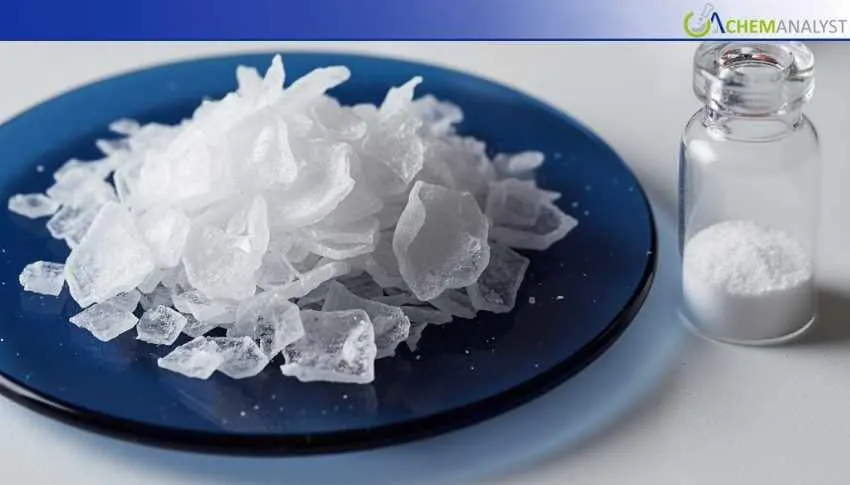Welcome To ChemAnalyst

The week ending October 3, 2025, saw the global Maleic Anhydride market exhibit uneven trends. Market participants attributed falling prices in China to weak downstream demand and limited pre-holiday activity, whereas U.S. pricing remained relatively flat. In China, pricing pressures were compounded by slow consumption from unsaturated polyester resin producers and destocking; prices were expected to be under pressure despite a slight increase in feedstock prices that took effect during the week. Continued curtailments were said to hamper market sentiment with purchasers appearing particularly cautious. Meanwhile, the U.S. continued to prove resilient through underlying sustained demand from the coatings, and automotive sectors, as well as being protected from import competition due to extremely high tariffs. Constancy in logistics also supported U.S. producers, coupled with lower feedstock prices as was the case in overall Maleic Anhydride production. Looking ahead, analysts warned of continued weakness in the Chinese market after the holiday while remaining steadfast on prices moving in a steady-to-firm direction in the U.S., with further automotive demand likely enhancing localized land and localized prices observed earlier in the week.
In the week ending October 3, 2025, the Maleic Anhydride market around the world exhibited a mixed bag of trends between major producing regions, namely, the United States and China. The scenario in China saw a minor decline in maleic anhydride markets due to sluggish downstream demand, and continued destocking in front of the National Day holidays, while the US market was largely stable, supported by good local demand and trade protectionism. Regional maleic anhydride market performance during this period was driven by differences in supply-demand fundamentals, the cost of feedstocks and the logistics environment.
The domestic maleic anhydride market in China continued its downward trend into the last week of September, with average prices falling around 3% week on week. It was assumed that the price weakness in the maleic anhydride was largely due to weaker consumption downstream in unsaturated polyester resins (UPR), where limited pre-holiday purchases from resin producers resulted in lower trading volumes. Many downstream resin-manufacturing plants, with the upcoming Golden Week holidays in mind, had scheduled plant-wide shutdowns or were running at reduced loads, thus limiting short term needs as well as supply obligations in the maleic anhydride market.
As for supply, producers were engaged mostly in destocking, but these attempts provided little price support due to continuing oversupply. n-Butane feedstock prices in Shandong were slightly higher during the week but ultimately continued demand weakness provided net-negative effect. Overall, Chinese maleic anhydride producers were operating at a low margin, and the near-term market sentiment was bearish, with analysts foreshadowing that prices would likely hold at lower levels, at least in early October.
On the contrary, the price of maleic anhydride was steady in the U.S. through early October following a gradual decline in September. The North America maleic anhydride market was robust against the world slide. There were many insulation factors. Overall demand remained steady from the chemicals, coatings and lubricants markets supported by healthy manufacturing activity. The US Manufacturing activity eased slightly in September, but expansion was still recorded, and the automotive market, significant to UPR, was up 5.8% year on year in sales. Increasing EV sales and continued production gains maintained the baseline consumption of maleic anhydride derivatives.
Furthermore, trade protectionism and elevated import tariffs on maleic anhydride from China effectively insulated the US market from international oversupply pressures. Lower feedstock prices than global levels, and stable local logistics helped underpin price stability. US producers benefitted from regional supply, while elevated freight rates from Asia and Europe suppressed imports.
As October was approaching the middle of the month, it is anticipated that the US maleic anhydride market would maintain a steady-to-firm trend, assisted by domestic demand and production stability. In contrast, the Chinese market is expected to remain underwhelming, as post-holiday restocking in the short-term would determine the market direction. Overall, the global market balance remained soft; any sustained recovery would depend on any potential demand revival from the downstream resins and polymers in Q4 of 2025.
We use cookies to deliver the best possible experience on our website. To learn more, visit our Privacy Policy. By continuing to use this site or by closing this box, you consent to our use of cookies. More info.
